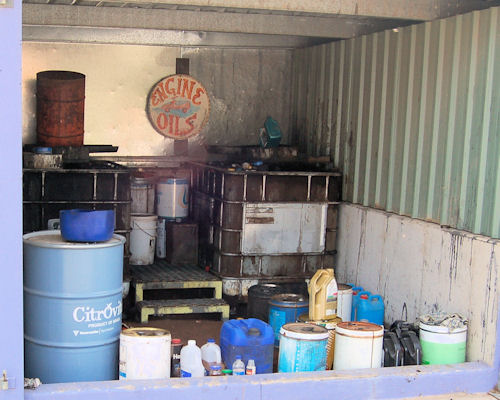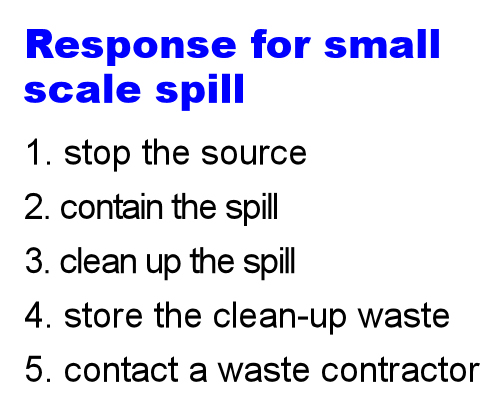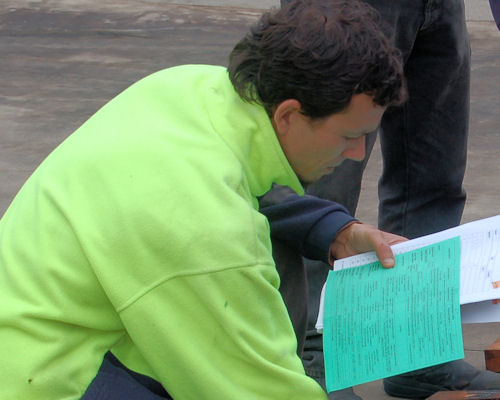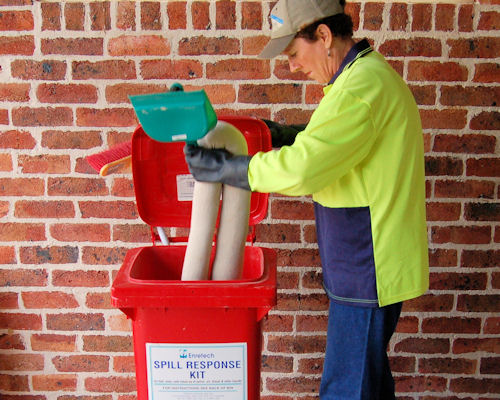Hazardous spills
 Audio for slide 1 (mp3 |6|KB)
Audio for slide 1 (mp3 |6|KB)
Some liquids are classified as hazardous because they have the potential to cause harm if they are stored or handled incorrectly. The sorts of hazardous liquids that you're most likely to come across include:
- fuels, such as petrol, diesel and LP gas
- solvents, such as paint thinners, methylated spirits and turps
- poisons, such as pesticides and herbicides
- acids, such as battery acid or hydrochloric acid
- glues, sealants and coating products.

 Audio for slide 3 (mp3 |6|KB)
Audio for slide 3 (mp3 |6|KB)
Response for a small scale spill
The general response for a small scale spill is:
- Stop the source of the spill straight away, if it's safe to do so.
- Contain the spill, using the materials in the spill kit.
- Clean up the spill, in accordance with the Material Safety Data Sheet (MSDS).
- Store the clean-up waste in a sealed container.
- Contact a licensed waste contractor to take away the waste materials.

 Audio for slide 5 (mp3 |6|KB)
Audio for slide 5 (mp3 |6|KB)
Material Safety Data Sheets
Every manufacturer of hazardous substances is required to produce a material safety data sheet (MSDS) for each substance. This document provides information on how to use the product safely, what to do in the event of a spillage, and how to handle other health, safety and environmental care issues.

 Audio for slide 6 (mp3 |6|KB)
Audio for slide 6 (mp3 |6|KB)
Many companies produce their own MSDS summaries, which they develop by taking the full MSDS and turning it into a one-page ready-reckoner for the workers who use the products.
These summaries can then be laminated or pinned up on the wall near where the products are stored.
Click on the link below to see an example of a workplace MSDS summary.

These summaries can then be laminated or pinned up on the wall near where the products are stored.
Click on the link below to see an example of a workplace MSDS summary.

 Go to Assignment
Go to Assignment

